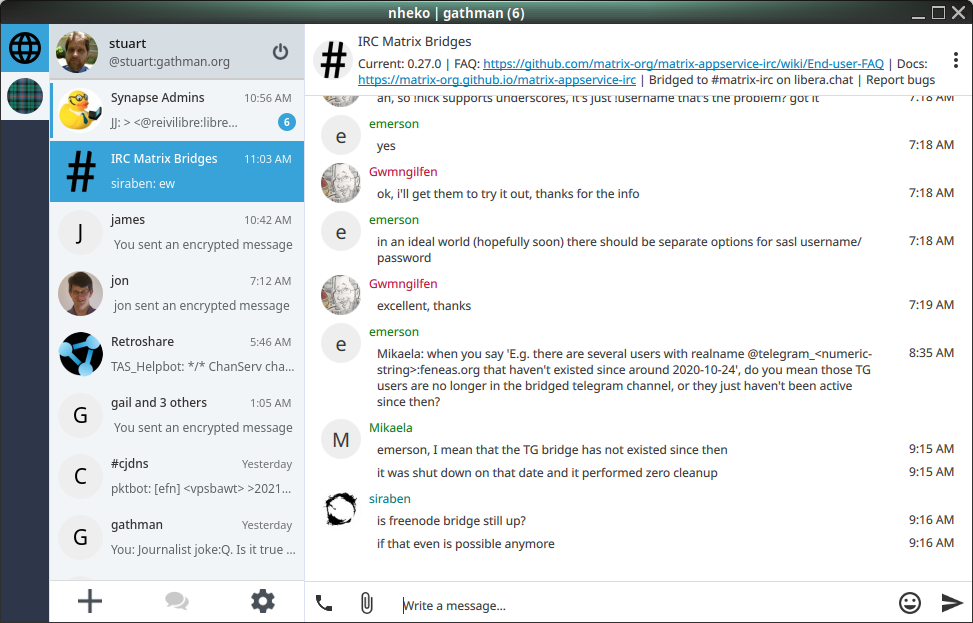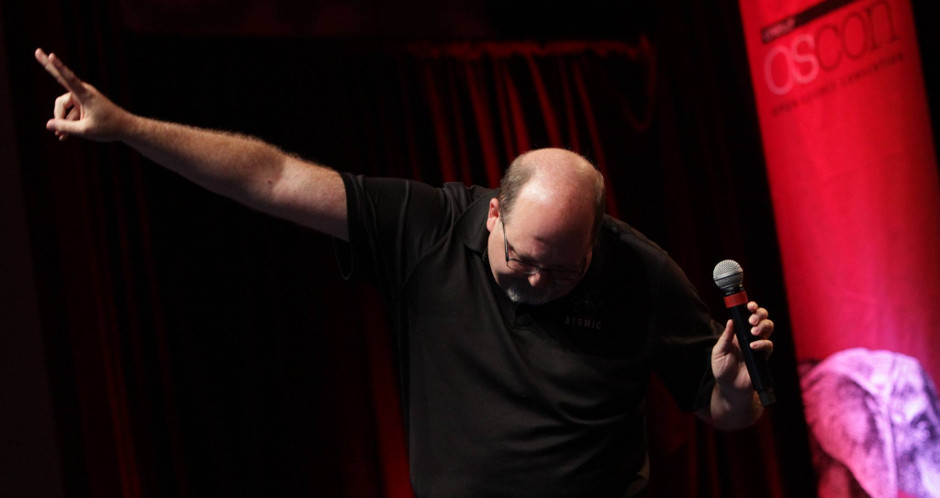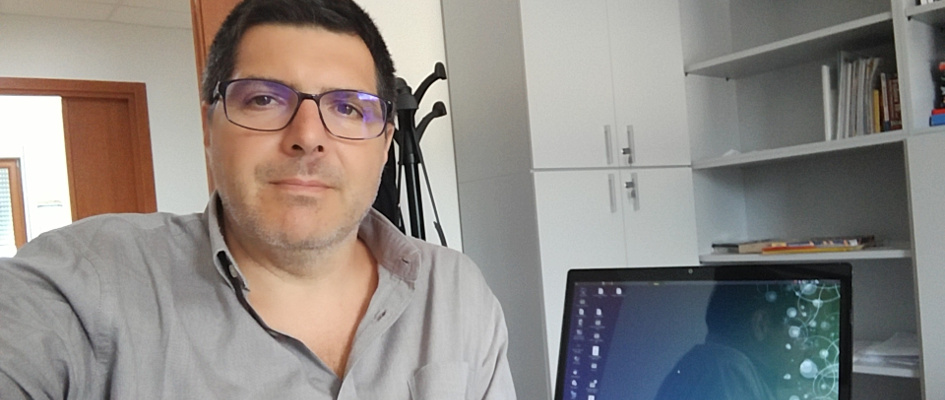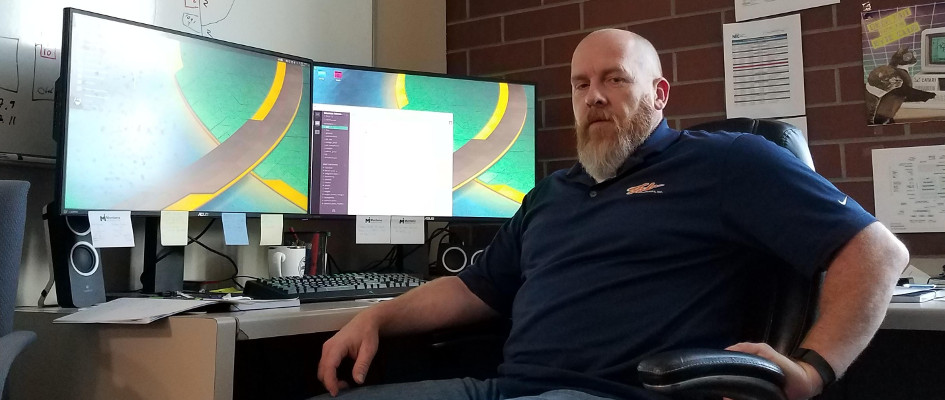We recently interviewed Fedora user Stuart D. Gathman on how he uses Fedora Linux. This is a part of a series on the Fedora Magazine where we profile users and how they use Fedora Linux to get things done. If you are interested in being interviewed for a further installment in this series you can contact us on the feedback form.
Who are you and What do you do ??
For 35 years, Stuart worked as a System programmer for a small company where his projects included database servers, device drivers, protocol stacks, expert systems, accounting systems, aged AR/AP reports, and EDI. Currently, he is doing hourly consulting work for small businesses.
Stuart’s childhood heroes were his Dad and George Müller. His favorite movies are “The Gods must be crazy” and “The mission”. He grew up in a pacifist denomination, so feels “The mission” movie is very relevant to him. He loves over roasted vegetables.
Composing and performing music, Mesh networking, and refurbishing discarded computers to run Fedora Linux are some of his spare time interests as well as history, especially ancient Western and 19th century English/American.
“Love/charity, Hope, Faith, Virtue, and knowledge” are the five qualities someone should possess, according to Stuart.
Fedora Community
Stuart’s first Linux was Red Hat Linux 3 in 1996. ”At first, I wasn’t sure how free it was going to work out but I took the plunge with Fedora 8 and was very pleased with the quality and stability. It was so nice to have more recent applications already packaged that required a lot of effort on my part to package for Red Hat Linux. One doesn’t need to be a programmer to contribute. There are other skills that go into making a great Linux distro. The most important skill that can be learned is how to submit a useful bug report. I honestly love the way Fedora Linux is organized, as is, and I keep hoping my Pinebook (ARM) onboard wifi and mic will start working with the next kernel release”, says Stuart.
The one person who influenced him to contribute to Fedora Linux was Caleb James DeLisle. Stuart had been building local RHL, RHEL, and Fedora Linux packages for personal and work repositories since 1996, but hadn’t taken the plunge to become an official Fedora packager. In 2015, he began researching how to decentralize network connections and on Mar 22, 2016, his Fedora Cjdns package was officially approved!. After that, he added more packages supporting decentralized communication, like OpenAS2, and more are on the way.
Some of the skills Stuart uses in his work are building software from source, RPM packaging (similar to programming), understanding and following Fedora Linux packaging guidelines, and learning unfamiliar programming languages sufficiently to build their applications from the source.
Stuart’s suggestions to newbies who want to become involved in the Fedora project are: “First, learn to file bug reports then, extend Fedora for your own use, write cheat sheets, create a diagram to help you and others understand an application or utility, add a cool photo to your desktop backgrounds, make your own sound effects, develop “best practices” for using applications and utilities for a particular job or project. Write about it for Fedora Magazine. Outline how you would explain the benefits of Fedora to various audiences”. His biggest concern is that Fedora Linux might fall victim to politics unrelated to the project goals.
What hardware do you use ??
Stuart is currently running a second-hand Dell Optiplex 790 desktop, a Raspberry Pi3, and Pinebook (ARM) small form factor notebook with an all-day battery which were all bought new. He also runs, a Dell Poweredge T310 VM host running Fedora Linux in virtual machines, a Dell Poweredge SC440, a Dell Inspiron 1440, a Thinkpad T61, (all of which were being discarded) and a refurbished Dell Latitude 3570 laptop. The Inspiron 1440 is his favorite as it is so comfortable to use, but the core 2 duo does not support hardware virtualization.
What software do you use??
Stuart is currently running Fedora Linux 33 and Fedora LInux 34. He wrote an article about using LVM for system upgrades for the Fedora Magazine that can allow easy booting between versions for testing new releases.
Stuart relies on a suite of applications in his work:
- Vim Text Editor
- Pidgin for IRC
- Jabber for instant messaging (xmpp)
- Linphone for SIP voice, video calls and Nheko for messaging
- Hugo for creating static websites and FBreader to read e-books.
- Glabels for business cards, CD labels, address labels
- Evolution, Alpine, Geary, and Opensmtpd for email
- Virtual Machine Manager
- PGadmin3 for PostgresSQL administration and development
- Stellarium for stargazing
- Vym for quickly building outlines for a talk or idea
- Gkrellm to keep an eye on local machine and servers.














































Marc
The only problem I have, is not to able to use video down loader from Firefox. I know of no work around for mkv webm and some mp4 files. Ubuntu is able to use deb files, to get Gdebi to open companion app
Anon
YouTubeDL works fine
Greg Zeng
Love PCLOS, which also uses a version of RPM (Mandriva). RPM packages however are so incompatible between the many similar RPM operating systems. So Debian based systems (Mint, Ubuntu, Linux FX, etc) are much better.
Gaurov Soni
foliate for epub reader
Sirko Kemter
Nice said and very diplomatic “His biggest concern is that Fedora Linux might fall victim to politics unrelated to the project goals. “
AsciiWolf
Is that a RTL-SDR dongle in front of his Dell desktop? Nice! 🙂